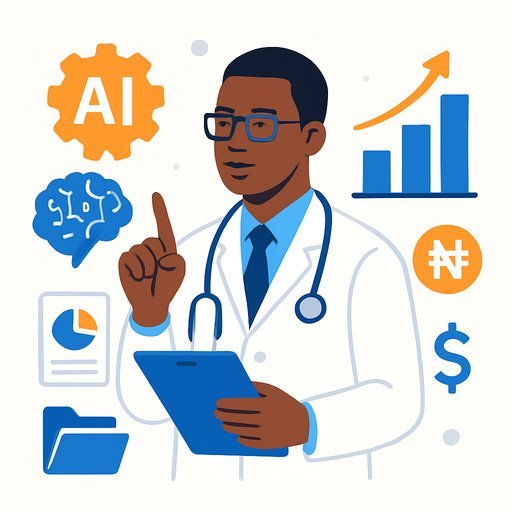Rejecting generative AI in healthcare won't protect patients - it will harm them
Healthcare is already risky. Before judging genAI, we have to look honestly at what's failing today. In the US, misdiagnoses are linked to hundreds of thousands of deaths each year, and preventable medical errors claim even more lives. Chronic disease care runs on long gaps and limited follow-up. Mental health support is often unavailable when people need it most.
GenAI won't fix everything. But used correctly, it closes dangerous gaps in time, attention and access. The goal isn't AI or clinicians. It's clinicians plus patients plus AI, working together.
The core problem: gaps that cause harm
Patients with hypertension, diabetes or heart failure can go months without adjustments, even when their numbers drift. Small issues become emergencies. At night and on weekends, many people have nowhere to turn but the ER.
We can do better. GenAI can extend the reach of care teams between visits and outside office hours, without adding hours to already impossible schedules.
Where genAI helps (and where it doesn't)
- Chronic disease monitoring: Flag rising blood pressure or weight changes early, prompt medication reviews and trigger outreach before deterioration.
- Medication safety: Surface potential interactions, duplications and dose mismatches during ordering and reconciliation, with concise, context-aware summaries.
- Mental health support off-hours: Provide evidence-based coping guidance and triage prompts at 2am, escalating to on-call clinicians for risk signals.
- Patient education: Translate plans into plain language, multiple languages and reading levels, with teach-back prompts and next steps.
- Documentation and inbox relief: Draft notes, letters and replies for clinician review to reduce clicks and cognitive load.
What it doesn't do: make final diagnoses, override clinicians or replace accountability. Think of it like a stethoscope that never sleeps-useful, everywhere, and only as good as the clinician using it.
Risk management done right
- Human-in-the-loop: Require clinician review for any action that changes care. No autonomous orders.
- Guardrails: Clear escalation thresholds, hard stops for high-risk outputs and automatic handoffs to humans for uncertainty or safety flags.
- Data privacy: Keep PHI secure, log access, restrict prompts that expose sensitive data and vet vendors for HIPAA and security posture.
- Bias and hallucinations: Benchmark models on your population, spot-check outputs, and monitor drift. Prefer retrieval-augmented designs with cited sources.
- Transparency: Tell patients and staff when AI is used, what it does and how to get a human immediately.
- Measurement: Track outcomes and rollback criteria before scaling. If it's not safer or faster, stop it.
What success looks like
- Shorter time from signal to intervention (eg, elevated BP to med titration).
- Better control rates (A1c, BP, LDL) and fewer avoidable ED visits or readmissions.
- Lower documentation time per visit without loss of accuracy.
- Improved patient comprehension scores and adherence.
- Fewer inbox backlogs with faster response times on triage-able messages.
Practical first steps for clinical leaders
- Pick one high-friction use case (eg, heart failure weight alerts or note drafting) and run a 60-90 day pilot.
- Define safety rules: escalation criteria, stop phrases, supervision requirements and audit frequency.
- Integrate with existing workflows instead of adding new apps. Meet clinicians where they work (EHR, secure messaging).
- Train the team on good prompts, known failure modes and how to verify outputs quickly.
- Measure before/after with a small, clear KPI set. Share results openly, including misses and fixes.
Why refusal harms patients
Misdiagnoses and medical errors remain a major source of preventable harm. Turning away tools that can surface early warnings, extend access and reduce noise leaves those failures untouched. The status quo is not a safe baseline.
If we pair dedicated clinicians with informed patients and well-governed AI, care gets safer, faster and more consistent. That's the path forward.
Further reading: See AHRQ's summary on diagnostic errors for context on current risks here.
Upskill your team: For role-based AI literacy and workflows, explore curated options by job here.
Your membership also unlocks:






